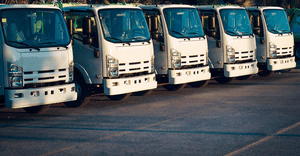The Role of the Dirty MRF
Go to any transfer station, incinerator or landfill, and you will see ample amounts of cardboard, newspaper, office paper, plastics and metal that could be recovered for recycling. Despite the industry’s best efforts to educate citizens and attempts to make recycling easy and convenient, consumers still place a significant amount of recyclable material into the trash that ends up being disposed of at incinerators and landfills.
Frustrating? Yes.
Preventable? It depends.
There are typically three ways that recyclables are recovered:
Source separated (curbside, drop-off, redemption center or take-back programs)
Single stream
Recovery from a mixed waste processing facility
So, which is best? Which is most cost effective? Which is best for the environment?
The answer is … it depends. It depends on a number of conditions, including:
The willingness or ability of a customer or a municipality to pay for recycling services.
The age and condition of the existing solid waste infrastructure within a local community.
The cost of collecting solid waste and recyclables from the curb.
The cost to transport materials to recycling centers and disposal outlets.
The availability and distance to mills and ports where recyclables can be shipped.
The cost of disposal.
It’s important to remember that all of the conditions above can change over time, and therefore solid waste and recycling programs need to be evaluated and re-engineered from time to time to ensure efficiency and effectiveness.
In the 1970s and 1980s, drop-off centers were the primary avenue to recycling. In the mid to late 1980s, curbside recycling began to take hold, and it was common for drivers of recycling trucks to sort materials at the side of the truck while on the route. The driver would climb out of the truck, take material out of the blue bin and segregate it into various compartments on the truck. It didn’t take long to figure out the gross inefficiencies of a truck driver walking up and down the side of a truck sorting recyclables. But at the time, few material recovery facilities (or MRFs) existed.
During the next several years, the recycling industry invested in MRF technology, which transformed the collection process. Across the United States, programs developed where containers made of plastic, glass and metal were collected in one truck or compartment while newspaper and cardboard were collected in a second truck or compartment. Over time, many recycling programs evolved to single-stream recycling in which all recyclables were placed into the same bin and collected to be processed and sorted at a recycling center, where advanced technology and sorting systems dissect the recyclables into various commodities.
Over time, each generation of recycling has transformed. Now it seems like some recycling programs are heading back to where we started, with no source separation. But instead of shipping waste directly to a landfill, material is being moved from the curb to a transfer station and recycling center where it can be processed and recyclables can be liberated from the waste stream. The remaining material that has no economic value or for which there is no viable market would continue to be treated as waste and either landfilled or incinerated.
Recently, several municipalities have taken a renewed interest in the establishment of mixed waste processing facilities, which are essentially transfer stations with a recycling component where the entire waste stream is processed to recover recyclables. Like the traditional MRF, mixed waste processing facilities use a combination of machinery and human hands to recover and sort various recyclables.
The idea of the mixed waste processing facility is not new. Many municipalities tried mixed waste processing in the 1990s and 2000s. Many of the older systems failed mostly because of the inability to effectively segregate materials. But processing technology has evolved and the sorting process has become much more effective over the years. Today, technological changes in the processing of recyclables allows operators of mixed waste processing facilities to recover recyclable items that would otherwise be landfilled.
Proponents of mixed waste processing point to the fact that all of the waste can be screened and the recovery of recyclables is not dependent on consumer participation. No need to rely on citizens to do the right thing, just let technology and a workforce at a specialized facility recover commodities for recycling.
Proponents also stress that adjustments at mixed waste processing facilities are easy to make. If a commodity suddenly has no market, stop picking it. When another commodity suddenly becomes valuable and needs to be recovered, just tweak the system and begin the liberation process of the desired material. Proponents also will point out that technological advances in processing equipment has resulted in the production of higher quality materials for recycling.
Opponents of mixed waste processing state that the potential for contamination is high and the recovery rate is relatively low compared to source separated programs. Opponents also point to the high cost of construction and operation of a mixed waste processing facility as another drawback. Additionally, opponents fear for employees are at greater risk at mixed waste processing facilities because they are exposed to sharps, chemicals and other threats in the waste stream.
There is no “cookie cutter” approach to selecting a system for recycling. Selecting the best recycling program for a community requires a thorough analysis of economic and environmental considerations. Success must be determined based on the environmental benefits associated with the program. Environmentally, considerations include the impact to the air, land and water from the manufacturing process and the environmental costs of using recyclable material versus virgin raw materials. Like many decisions, economic factors will probably be the biggest factor in selecting a collection and sorting system for recycling.
Municipalities will demand lower costs for trash collection and recycling services; however, the price of recycling is rising rapidly as the cost of collecting and processing recyclables increases while commodity prices remain depressed. Mixed waste processing will continue to get more attention due to the technological advances that can enhance the ability to process solid waste and recover a significant portion of the waste stream. As the recycling process evolves, it is likely that mixed waste processing will play a big role in the next generation of recycling.
Will Flower is general manager with Winters Bros. Waste Systems in Long Island, N.Y.
About the Author(s)
You May Also Like


